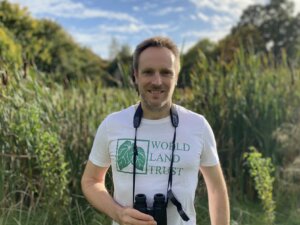 Andy Langley is a wildlife enthusiast and supporter of World Land Trust (WLT), who will be doing a sponsored birdwatch this October to raise money for WLT’s ‘Life on the Edge’ appeal, to save unique foothill forests of Ecuador’s eastern Andes which are under threat.
Andy Langley is a wildlife enthusiast and supporter of World Land Trust (WLT), who will be doing a sponsored birdwatch this October to raise money for WLT’s ‘Life on the Edge’ appeal, to save unique foothill forests of Ecuador’s eastern Andes which are under threat.
Each October, for the last five years, my employer Ecclesiastical Insurance has pledged matched funding up to £5,000 for a WLT sponsored birdwatch. By combining this with WLT’s Big Match Fortnight, if donations are made between 12 and 26 October through my JustGiving page, these donations will also be tripled.
So for every £1 donated, Ecclesiastical will double it to £2 and WLT will triple this to £6!
WLT’s Life on the Edge appeal
This year’s Big Match Fortnight Appeal is aiming to raise £1.43 million to enable the purchase of 5,123 acres of forest in Ecuador around two existing reserves – Rio Anzu and Rio Zúñac. Rio Anzu is a transition zone between Andean foothill cloud forest and Amazonian rainforest, while Rio Zúñac is an area of cloud forest, known for the high rate of plant endemism. WLT will be achieving this through working with local conservation partner EcoMinga, who they have worked with since 2007. The forest to be purchased will create a larger protected area and link Rio Zúñac to other existing protected land.
As always, the land that WLT is looking to protect in their Big Match Fortnight appeal is of particular importance – of the 36 biodiversity hotspots around the world, the Tropical Andes ranks first for plant, mammal, amphibian and freshwater fish species, and second for reptiles. It is also home to more threatened species and more endemic species than any other hotspot. The target area for this appeal is located at elevations where resident biodiversity is at its highest and where new species are still being discovered.
As with many forests, this area is under threat – at Rio Zúñac, nearby forests are being cleared to make way for cattle pasture and fruit production. Most of the tall forests in the Rio Anzu area have already been cut down for the valuable timber, and what forest is left is further threatened by the recent proposals of an oil extraction project. Even the steeper slopes are now vulnerable to exploitation due to new zip-line logging techniques.
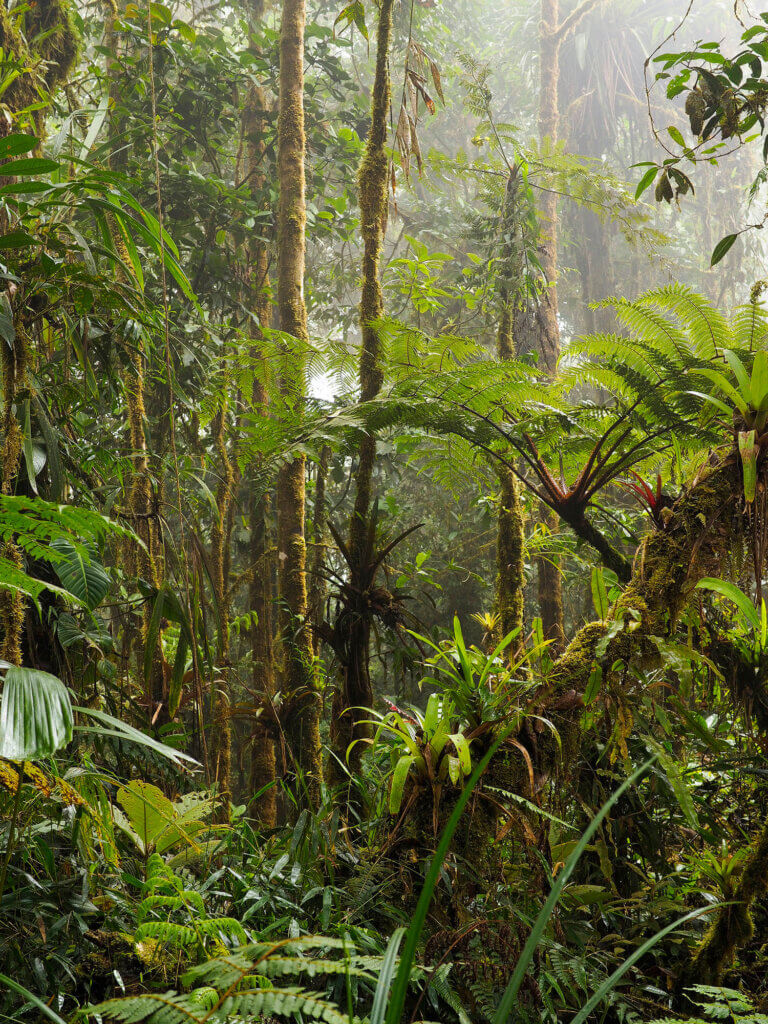
Wildlife that needs protection
Amongst the rich biodiversity in Rio Zúñac, there are eight EDGE (Evolutionary Distinct and Globally Endangered) species. This includes three mammal species – Spectacled Bear, Mountain Tapir and Ringed Spinytail Iguana. It is also home to iconic species such as the Jaguar, which although not an EDGE species, adds to the amazing variety of species, with several rare black (melanistic) individuals being spotted in the existing Rio Anzu reserve. EDGE bird species include Black-and-Chestnut Eagle, Chimney Swift, Ecuadorian Piedtail, White-capped Tanager and Coppery-chested Jacarnar. It is also hoped that with enough protected habitat the Military Macaw, which is an occasional visitor to the area, may be able to re-establish itself having been almost wiped out from the region by poaching for the illegal pet trade.
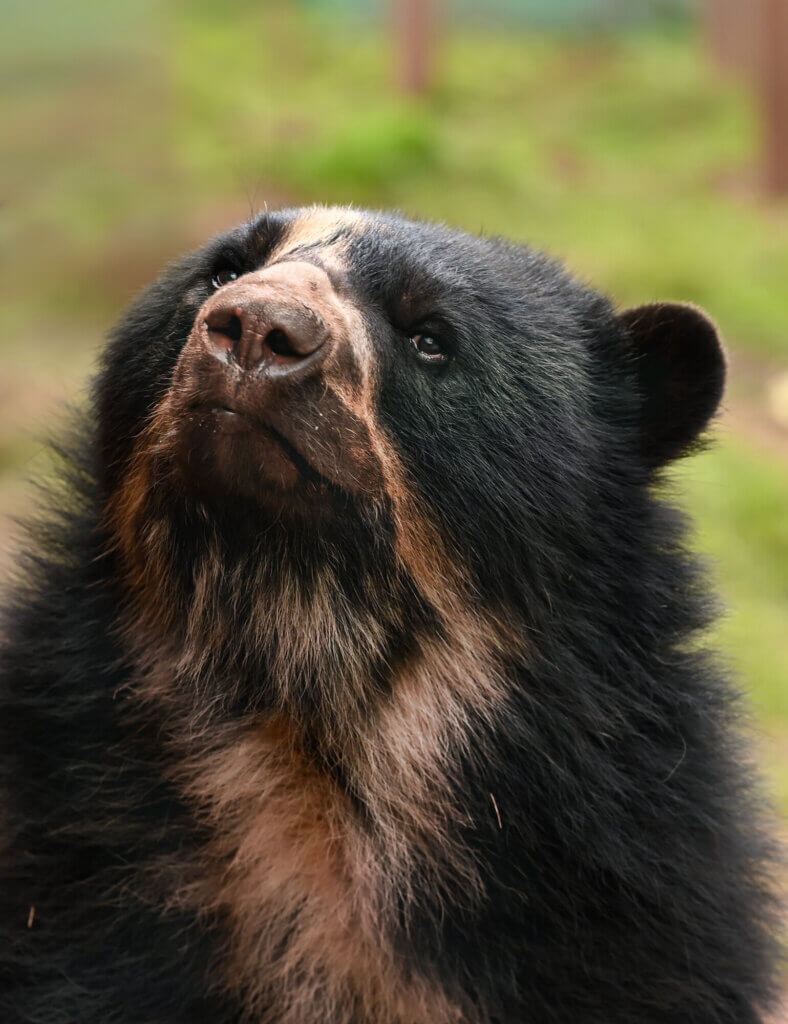
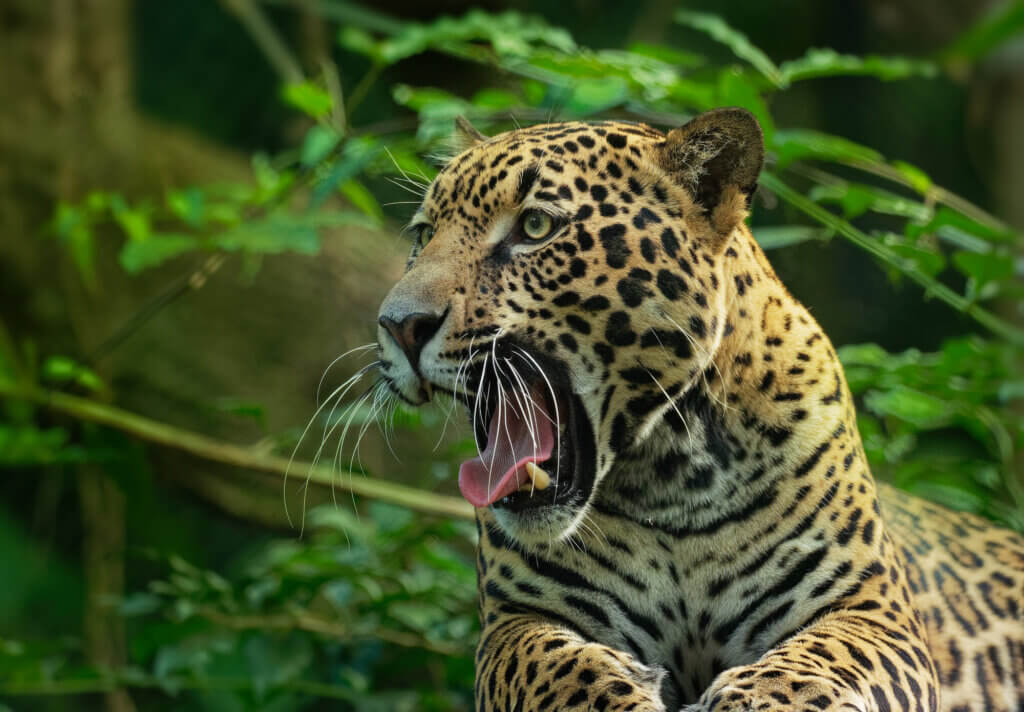
As a keen bird watcher, the Black-and-Chestnut Eagle stands out to me as one of the most striking species in the region – it is one of the largest eagles of the neotropics, with only the Harpy Eagle being considerably larger. It has beautiful glossy black feathers on its head and back, with streaky chestnut feathers on its underside. It also has piercing yellow eyes and an impressive crest of black feathers. Together, Rio Anzu and Rio Zúñac comprise part of the most important habitat for this species in Ecuador. The broader area is home to around 30 of the endangered birds, 15% of Ecuador’s entire population – with as many as 12 living in the reserves themselves. While this level of population density is regarded as “extremely high” by EcoMinga, there are thought to be fewer than 1,000 individuals remaining across their entire range. This appeal will protect more of the dense montane forests that this species relies on to survive.
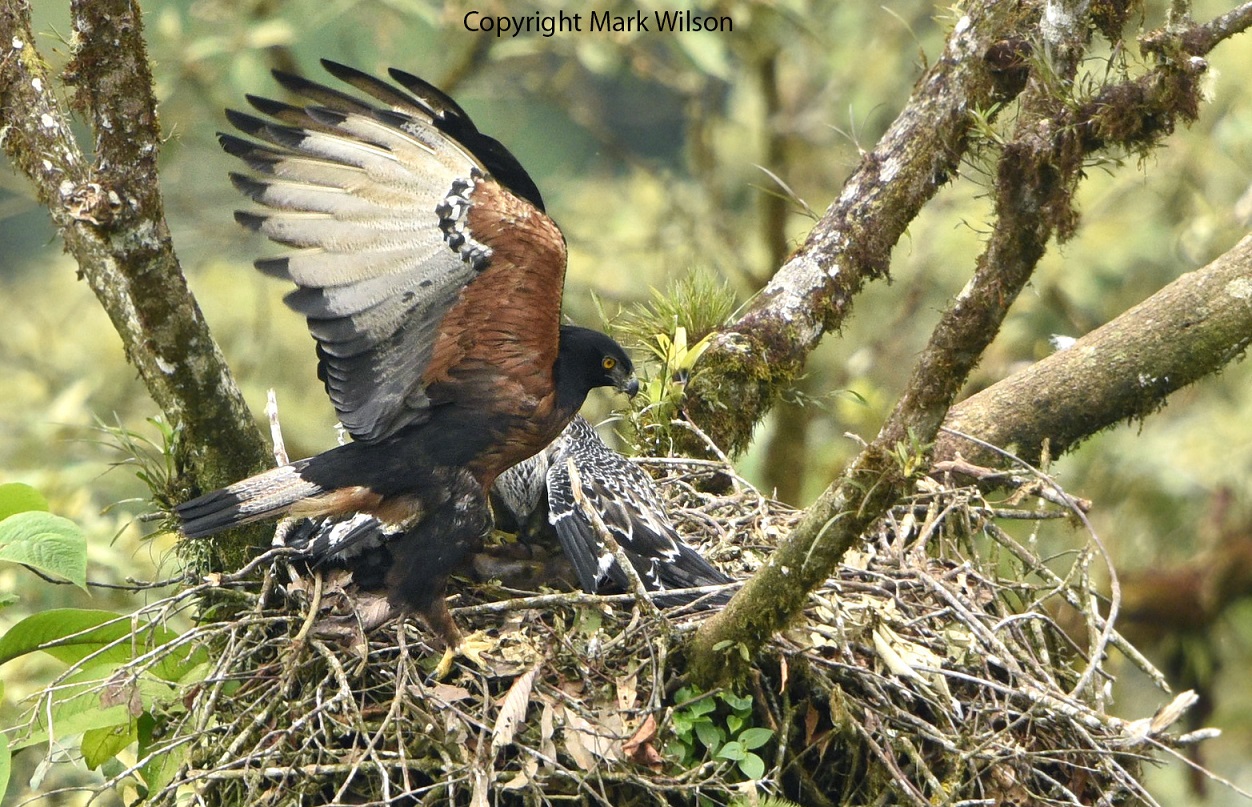
This Year’s Birdwatching Challenge
This year’s birdwatch is scheduled for Friday 14 October or a few days either side if the weather looks too bad. As I write this blog, with a few weeks to go, I’ve been checking The Gloster Birder website to see what unusual birds are around, safe in the knowledge that they probably won’t make an appearance for my birdwatch! Having said that, I have been very lucky in previous years with my species tally creeping up each year from 72 species in 2017 to 85 last year. I always aim to see as many species as possible from dawn to dusk, while avoiding doing too much driving. Over the last four years the total is now at 106, although I’d be happy with anything over 80 species this year.
I think this year will be a difficult year for fundraising, due to the cost-of-living crisis, but I’m always grateful for donations of any size which will go so much further when multiplied by six – this is the first time that WLT have been able to triple donations to their Big Match Fortnight Appeal, which is an amazing opportunity to make even more of a difference.
If you are able to spare any money to this great cause, please see my JustGiving page. Please also share details on social media to help turn £5,000 of donations into £30,000!

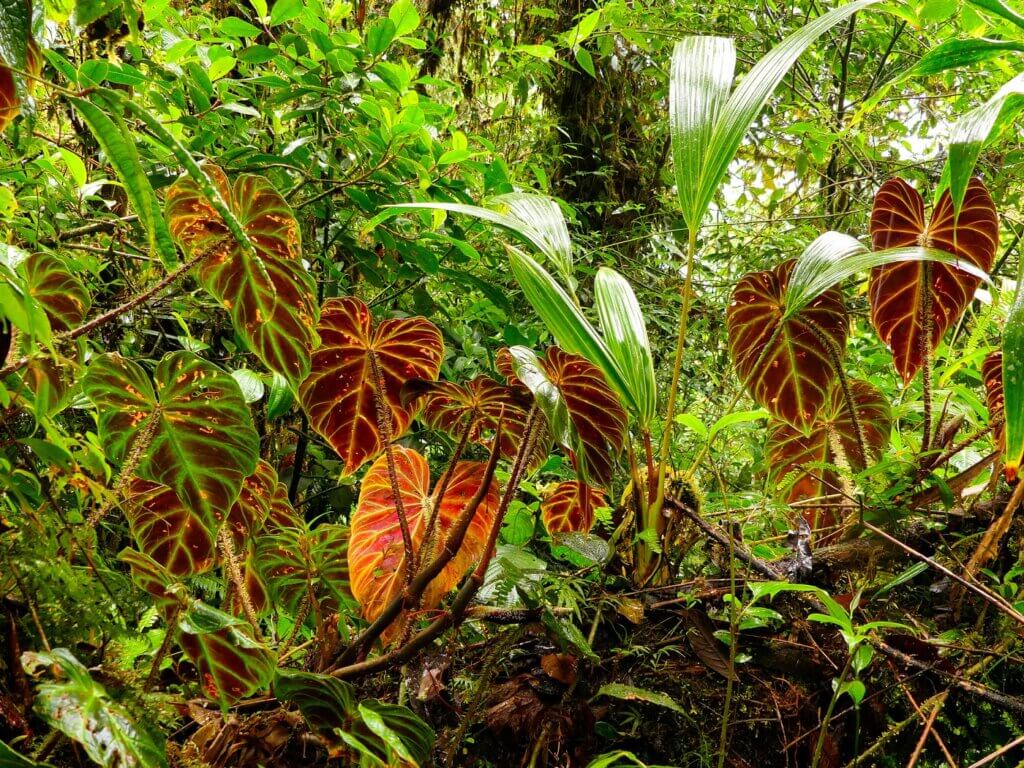
[registration_form]
These Andean forests are incredibly biodiverse, E O Wilson has written quite a bit about them, the term ‘Centinelan event’ is derived from what happened to a forest on Ecuador’s western Andean slope, it’s tragic. Given that the world currently wastes about 40% of the food it produces the fact forest is being lost anywhere to the expansion of agriculture is infuriating. Likewise does anybody actually need to have anything made from tropical hardwoods these days, isn’t its use purely decorative, a bit like wearing a leopard skin coat? I remember the days when the timber
companies were getting really scared re the growing public awareness about rainforest being logged for fancy wood, well the conservation/environmental community let that slip didn’t they? Chipped in a bit, not much, but something. Great you’re doing this Andy, bloody shame you have to.
There must be lots of opportunities for finding new sources of income for good causes by linking them to reduce, reuse, recycle that would be a great help to conservation organisations among others. I’ve done some back of the envelope calculations that suggest if all toothpaste manufacturers stopped using the mini cardboard box they traditionally come in, as some ultra cheap own brand supermarket ones already have, then they could collectively give 1.25 million pounds to charity each year while still saving themselves money from reducing the packaging and fuel currently used distributing them.
You should be able to actually halve the number of boxes, pallets and lorry loads needed to shift them. At worst it might ‘only’ be a one third saving which is still bloody massive. If the 250 million plus toothpaste tubes sold annually that would be affected by this gave a very measly 0.5 pence per unit to charity as a way to get the public to support the move and get good PR from it that’s a bare minimum 1.25 million quid per annum literally from nothing. I’m hoping to finish off a discussion paper on this soon as an example of what might be achieved. Worth a try at least?
Creating new and additional sources of income for charity that help reduce the consumption of natural resources would be a terrific win win, except for the people making money out of unnecessary crap in the first place of course. Finding a way to tie in fund raising with the public and private sector reducing food waste really would be hitting the jackpot – millions of tons produced each year costing billions, a fraction of the latter redirected to charity would still be a bloody fortune, plus less cause to cut down Andean forests and so much else. https://www.logisticsbusiness.com/it-in-logistics/true-cost-food-waste-uk-supply-chain/